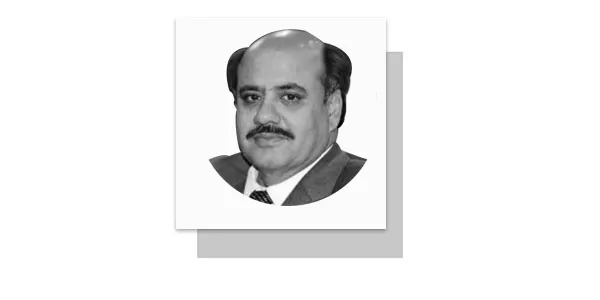THE unceremonious ouster of President Bashar al-Assad entirely transformed the domestic political landscape in Syria and deepened the complexity of regional politics. The Hayat Tahrir al-Sham (HTS)—leading group in the rebel coalition—announced that “the city of Damascus has been liberated; the tyrant Bashar al-Assad has been toppled. Long live a free and independent Syria for all Syrians of all sects.” These statements sprout optimism about the country’s end of the civil war. However, a series of developments alarmed the continuity of a violent contest for power in Syria. The potential for regional powers to vie for influence in the power vacuum left by Assad’s ouster intensifies the geopolitical situation. Are warlords running state lets along the post-Gaddafi Libyan model?
The current Syrian situation is the continuation of the 2011 Arab Spring, a series of pro-democracy uprisings that devoured several longstanding regimes in the Middle East. This wave of revolutions began with the end of over two decades of Tunisian President Zine El Abidine Ben Ali’s government on January 14, 2011, and was followed by the resignation of Egyptian President Hosni Mubarak on February 11, 2011, ending his 30-year presidency. The Libyan leader Muammar Gaddafi was overthrown on August 23, 2011, ending his 42-year regime and killed on October 20, 2011. Yemeni President Ali Abdullah Saleh resigned in February 2012. Sudanese President Omar Hassan Ahmad al-Bashir was deposed in a coup d’état on April 11, 2019. The demise of the Assad regime on December 8, 2024, has further escalated the political spillover in the region.
The US and its partners are celebrating and endorsing the victory of the rebel coalition, even though many of the rebel fighters were/are associated with Al-Qaeda and Islamic State (Daesh). For instance, Abu Mohammad al-Julani, the Islamist rebel leader of HTS, was associated with Al-Qaeda. The HTS is still formally designated as a terrorist group by the United Nations, the European Union and the United States.
The Americans had long dreamed of regime change in Damascus. They had enabled an allied militia in Syria’s northeast to move into areas once held by Assad and Iranian-backed groups, applauding designated terrorist groups’ victory. The US forces have conducted airstrikes in Syria to prevent the Islamic State’s reassertion. These actions, along with the announcement of the recognition and full support of a new Syrian government, raise questions about the extent of the United States’ involvement in the Syrian conflict. Are these strikes reminiscent of NATO’s actions in Libya in 2011, which accelerated the downfall and killing of Muammar Gaddafi?
The Western leaders and their regional ally Netanyahu’s jubilant statements germinated the impression that the Western powers had covertly supported the rebels against Assad. British Prime Minister Keir Starmer said, “The Syrian people have suffered under Assad’s barbaric regime for too long and we welcome his departure.” Netanyahu claimed the credit for the ouster of Assad. He said, “A direct result of the blows we have inflicted on Iran and Hezbollah.” They could use these rebel groups as their loyal proxies in the region to undermine the influence of Iran, Russia and China in West Asia.
Israel’s aerial campaign and ground operation in Syrian territory added another dangerous variable to the fast-moving situation in Syria. Israeli warplanes had launched over 480 strikes on Syrian territory, destroying dozens of missiles an airfield, weapons production sites across five cities and 15 naval vessels — effectively eliminating the Syrian Air Force, Navy and missile capabilities. Israel captured the demilitarized buffer zone created by a 1974 agreement on the Golan Heights- Syria border further to extend its illegitimate control of the Syrian territory.
The genocide of Palestinians may have little impact on Arab rulers, but Tel Aviv’s land-grabbing strategy cautioned them, especially Jordan and Saudi Arabia.
Turkey and the United States have been flexing their muscle to fill the power vacuum created by the weakening of Iranian and Russian influence in the country. Turkish-backed rebel forces are struggling to counter power grabs of the Kurdish Syrian Democratic Forces (SDF), an amalgamate of Kurdish and other Western-backed anti-Assad militias. Ankara aims to secure its bordering Turkey, removing the YPF (Kurdish militia) and the PKK remnants in Syria.
The end of decades of rule by minority Alawites – an offshoot of Shi’ite Islam – in majority Sunni Syria may unleash sectarian killing. Abu Mohammad al-Julani (real name Ahmed al-Sharaa), the Islamist rebel leader of HTS, ensured the Assad regime victims, “We will not hesitate to hold accountable the criminals, murderers, security and army officers involved in torturing the Syrian people.” It seems he is not prepared for reconciliation. The potential for sectarian violence, a grave concern, looms large. Whether Assad’s exit ends the civil war in Syria or multiplies sectarian violence in the country? It is difficult to predict because the warlords are already gliding against each other to maximize their gains in the present anarchical situation in the country.
Russia’s influence in the Middle East is compromised for now and Iran’s backed axis of resistance is immensely weakened. Notably, both Moscow and Tehran provided financial and material support to President Assad to curb the rebellions and counter the Western sanctions. In 2016, Syrian forces reconquered Aleppo with Russia’s military effectiveness. This time, Russians, instead of supporting Assad, evacuated some inland bases and focused on holding onto its pivotal Tartus naval facility on the Mediterranean.
Precisely, the weakening of the axis of resistance and Russian entanglement in the protracted asymmetrical warfare in Ukraine weakened Assad’s external military support against the rebels. In summary, the demise of Assad has not ended the miseries of the Syrians. The military presence of several countries, including Iran, Israel, Russia, Turkiye and the United States, and the existence of radicalized militant organizations such as Al-Qaeda, Daesh, etc, alarm about the deadly power struggle in Syria.
—The writer is Prof at the School of Politics and IR, Quaid-i-Azam University.








